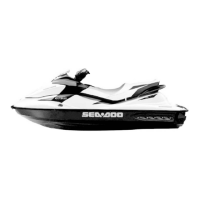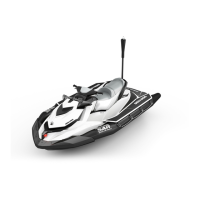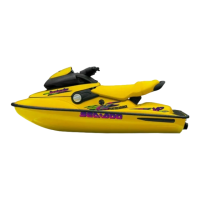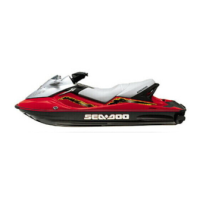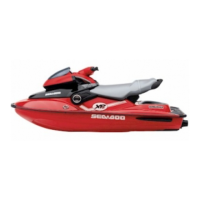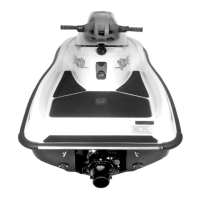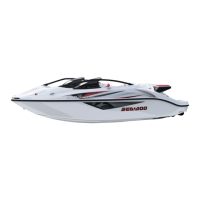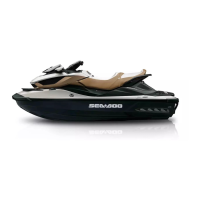SPECIAL SAFETY MESSAGES
Reminders Regarding Safe
Operation
The performance of this watercraft
may significantly exceed that of other
watercrafts you may have operated.
Make sure you read and understand
the content of this Operators Guide to
become completely familiar with the
controls and operation of the water-
craft before embarking on your first
trip, or taking on a passenger(s). If you
have not had the opportunity to do so,
practice driving solo in a suitable traf-
fic free area to become accustomed
to the feel and response of each con-
trol. Be fully familiar with all controls
before accelerating above idle speed.
Do not assume that all PWCs handle
identically. Each model differs, often
substantially.
Always keep in mind that as the throt-
tle lever is returned to the idle position,
less directional control is available.
To turn the watercraft, both steering
and throttle are necessary. Do not re-
lease the throttle when trying to steer
away from objects. You need throttle
to steer. If engine is shut off, direc-
tional control is lost.
Although most watercrafts have no
means of braking, advancement in
technologies now permit us to offer
models that are equipped with a brak-
ing system called the iBR
TM
system.
Practice braking maneuvers in a safe
traffic-free area to become familiar
with handling under braking and with
stopping distances under various oper-
ating conditions.
Stopping distance will vary depending
on initial speed, load, wind, number
of riders and water conditions. The
amount of braking power commanded
by the operator using the iBR lever (in-
telligent Brake and Reverse) will also
affect stopping distance.
When braking, ridersmust brace them-
selves against the deceleration force
to prevent from moving forward on the
watercraft and losing balance.
When operating an iBR equipped wa-
tercraft, be aware that other boats fol-
lowing or operating in close proximity
may not be able to stop as quickly.
When at speed and the brake is first
applied, a plume of water will shoot up
in the air behind the watercraft which
may cause the operator of a following
watercraft to momentarily loose sight
of your PWC. It is important to inform
the operator of a watercraft who in-
tends to follow in a convoy formation,
of the braking and maneuvering capa-
bility of your PWC, what the plume of
water indicates, and that a greater dis-
tance should be maintained between
watercrafts.
When actuating the iBR control lever
while the watercraft has some for-
ward speed, the braking mode will
engage and generate a deceleration
proportional to the iBR lever position.
The more you pull in the iBR lever, the
greater the braking force becomes.
Be careful to gradually actuate the iBR
lever to adjust the intensity of the brak-
ing force, and to simultaneously re-
lease the throttle lever.
Keep the tether cord clip attached to
the operators' PFD at all times and
keep it free from snagging on the
handlebars to help ensure the engine
stops should the operator fall off. After
riding, remove the tether cord from the
engine cut-off switch to avoid unautho-
rized use by children or others. If the
operator falls off the watercraft and the
tether cord is not attached as recom-
mended, the watercraft engine will not
stop.
Ride within your limits and level of rid-
ing ability.
Avoid aggressive maneuvers to reduce
the risk of loss of control, ejection and
collision. Understand and respect the
performance of your watercraft.
________
SAFETY INF
ORMATION
________
11
